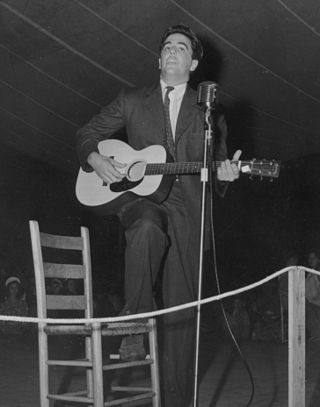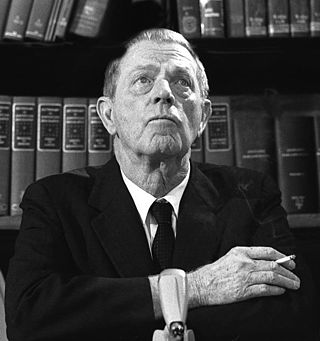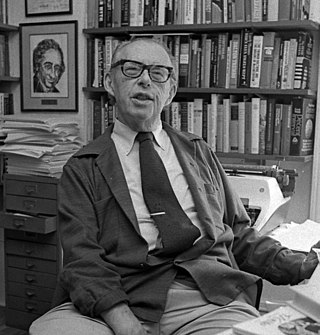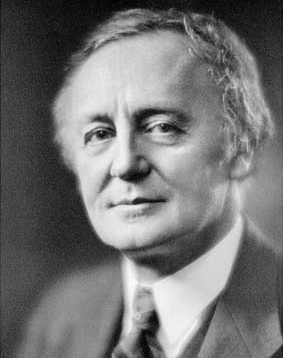
Alan Lomax was an American ethnomusicologist, best known for his numerous field recordings of folk music of the 20th century. He was a musician, folklorist, archivist, writer, scholar, political activist, oral historian, and film-maker. Lomax produced recordings, concerts, and radio shows in the US and in England, which played an important role in preserving folk music traditions in both countries, and helped start both the American and British folk revivals of the 1940s, 1950s, and early 1960s. He collected material first with his father, folklorist and collector John Lomax, and later alone and with others, Lomax recorded thousands of songs and interviews for the Archive of American Folk Song, of which he was the director, at the Library of Congress on aluminum and acetate discs.

Erskine Preston Caldwell was an American novelist and short story writer. His writings about poverty, racism and social problems in his native Southern United States, in novels such as Tobacco Road (1932) and God's Little Acre (1933), won him critical acclaim.

Carey McWilliams was an American author, editor, and lawyer. He is best known for his writings about California politics and culture, including the condition of migrant farm workers and the internment of Japanese Americans during World War II. From 1955 to 1975, he edited The Nation magazine.

Charles Marius Barbeau,, also known as C. Marius Barbeau, or more commonly simply Marius Barbeau, was a Canadian ethnographer and folklorist who is today considered a founder of Canadian anthropology. A Rhodes Scholar, he is best known for an early championing of Québecois folk culture, and for his exhaustive cataloguing of the social organization, narrative and musical traditions, and plastic arts of the Tsimshianic-speaking peoples in British Columbia, and other Northwest Coast peoples. He developed unconventional theories about the peopling of the Americas.
Sam Duffie Hinton was an American folk singer, marine biologist, photographer, and aquarist, best known for his music and harmonica playing. Hinton also taught at the University of California, San Diego, published books and magazine articles on marine biology, and worked as a calligrapher and artist.
Richard H. Gringhuis was an American artist and illustrator. Born in Grand Rapids, Michigan, he studied from 1939 to 1941 at the American Academy of Art in Chicago, lived in New York for a year, then moved back to Michigan. He wrote and illustrated 28 books, half of them on Michigan history. He also was producer-host for the television series, “Open Door to Michigan.” He served as Curator of Exhibits at the Museum and associate professor in Elementary Education at Michigan State University. He received special awards for his work on Michigan, including the Governor's Award, A National Educational Television Award, and an Award of Merit from the Michigan Historical Society. He was closely associated, as a contract author and artist, with the Mackinac Island State Park system from 1958 until his death. During that time he wrote and illustrated four publications on the Mackinac region, illustrated many others and painted exhibit murals. Having moved to East Lansing in 1952, he painted the Michigan Folklore Mural at the East Lansing Public Library.
Duell, Sloan and Pearce was a publishing company located in New York City. It was founded in 1939 by C. Halliwell Duell, Samuel Sloan and Charles A. Pearce. It initially published general fiction and non-fiction, but not westerns, light romances or children's books. It published works by many prominent authors, including Archibald MacLeish, John O'Hara, Erskine Caldwell Anaïs Nin, Conrad Aiken, Wallace Stegner, E. E. Cummings, Howard Fast, Benjamin Spock, Joseph Jay Deiss, and William Bradford Huie. In addition to their literary list, the firm published many works of military history, with a focus on aviation in the war years.
Carl Lamson Carmer was an American writer of nonfiction books, memoirs, and novels, many of which focused on American myths, folklore, and tales. His most famous book, Stars Fell on Alabama, was an autobiographical story of the time he spent living in Alabama. He was considered one of America's most popular writers during the 1940s and 1950s.
Allan Rucker Bosworth was an American author, newspaperman, and naval officer. He was a prolific writer of novels, short stories and magazine articles. Between 1925 and 1936 he worked at several California newspapers as a reporter and editor. He also served in the United States Navy and Navy Reserve for some 38 years.
Arthur Bernon Tourtellot was an American writer, screenwriter and producer best known for the book Lexington and Concord.
Stanley Vestal was an American writer, poet, biographer, and historian, perhaps best known for his books on the American Old West, including Sitting Bull, Champion of the Sioux.
In social science, foodways are the cultural, social, and economic practices relating to the production and consumption of food. Foodways often refers to the intersection of food in culture, traditions, and history.
American literary regionalism, often used interchangeably with the term "local color", is a style or genre of writing in the United States that gained popularity in the mid-to-late 19th century and early 20th century. In this style of writing, which includes both poetry and prose, the setting is particularly important and writers often emphasize specific features, such as dialect, customs, history and landscape, of a particular region, often one that is "rural and/or provincial". Regionalism is influenced by both 19th-century realism and Romanticism, adhering to a fidelity of description in the narrative but also infusing the tale with exotic or unfamiliar customs, objects, and people.
Frank Edgington Fenton was an American writer of screenplays, short stories, magazine articles, and novels.
Edwin Corle was an American writer.

The American Guide Series includes books and pamphlets published from 1937 to 1941 under the auspices of the Federal Writers' Project (FWP), a Depression-era program that was part of the larger Works Progress Administration in the United States. The American Guide Series books were compiled by the FWP, but printed by individual states, and contained detailed histories of each of the then 48 states of the Union with descriptions of every major city and town. The series not only detailed the histories of the 48 states, but provided insight to their cultures as well. In total, the project employed over 6,000 writers. The format was uniform, comprising essays on the state's history and culture, descriptions of its major cities, automobile tours of important attractions, and a portfolio of photographs.
John Wesley Conroy was a leftist American writer, also known as a worker-writer. He was best known for his contributions to proletarian literature: fiction and nonfiction about the life of American workers during the early decades of the 20th century.
Clark McMeekin was the joint pseudonym of authors Dorothy (Park) Clark and Isabel (McLennan) McMeekin. They are known for a series of popular historical novels set in the state of Kentucky during the 19th century.
Manning Long, was an American writer of detective fiction, known for the Liz Parrott mysteries.
The Bloodhound was an imprint of Duell, Sloan & Pearce for the publishing of its suspense, crime, and detective fiction novels.





